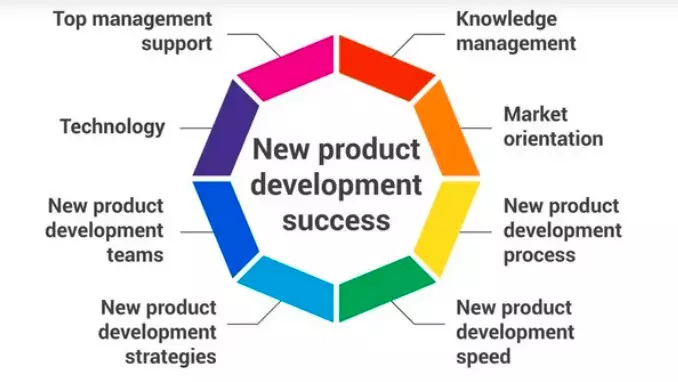NEW PRODUCT DEVELOPMENT PROJECT MANAGEMENT
NEW PRODUCT DEVELOPMENT PROJECT MANAGEMENT STRATGEY Developing new cosmetic products requires effective project management to ensure smooth coordination and successful outcomes. Here are the key steps and considerations involved in project managing the development of new cosmetic packaging products:
KEY STEPS AND CONSIDERATIONS
Define Project Objectives: Clearly define the objectives and scope of the new packaging development project. Identify the specific requirements, such as packaging type, materials, functionality, design, and desired timeline.
Form a Cross-Functional Team: Assemble a cross-functional team consisting of representatives from various departments involved in the packaging development process, such as marketing, product development, packaging engineering, manufacturing, quality assurance, and regulatory compliance. Assign clear roles and responsibilities to team members.
Develop a Project Plan: Create a comprehensive project plan outlining the key tasks, milestones, timelines, and dependencies. Include factors such as research and ideation, concept development, prototyping, testing, production, and launch activities. Break down the plan into smaller, manageable tasks to track progress effectively.
Ideation and Concept Development: Brainstorm and generate creative ideas for the new packaging design. Consider market trends, consumer preferences, sustainability aspects, and brand positioning. Evaluate and select the most viable concepts for further development.
Prototyping and Testing: Transform the selected concepts into physical prototypes for testing and evaluation. This may involve collaborating with packaging suppliers or utilizing in-house resources. Test the prototypes for functionality, compatibility with the product, ergonomics, durability, and other relevant factors. Gather feedback from stakeholders, including end-users, to refine the design.
Iterative Design Refinement: Based on the feedback and testing results, refine the packaging design iteratively. Address any issues or concerns identified during the prototyping and testing phase. Work closely with the cross-functional team and stakeholders to ensure alignment and make necessary modifications.
Regulatory Compliance and Documentation: Ensure that the new packaging product complies with relevant regulatory requirements, such as labeling, safety standards, and packaging material restrictions. Document all necessary information and certifications for future reference and regulatory audits.
Supplier Selection and Qualification: Identify suitable packaging suppliers based on the project requirements. Evaluate potential suppliers based on their expertise, quality track record, capacity, pricing, and ability to meet the project timeline. Initiate discussions and negotiate contracts or agreements with selected suppliers.
Production and Manufacturing: Coordinate with the packaging suppliers and manufacturing teams to initiate production. Monitor the manufacturing process closely to ensure adherence to quality standards, timelines, and cost considerations. Conduct regular quality checks and address any issues that may arise during production.
Launch and Post-Launch Evaluation: Plan and execute the launch of the new packaging product, considering marketing strategies, communication materials, and distribution channels. Monitor the initial response and gather feedback from customers and stakeholders. Evaluate the success of the new packaging product against predefined metrics, and identify areas for further improvement.
Throughout the project, effective communication, collaboration, and coordination among team members, stakeholders, and suppliers are crucial. Regular project status updates, progress reviews, and risk assessments should be conducted to ensure that the project stays on track.

A successful new product development (NPD) strategy integrates project management principles to ensure products are developed efficiently, meet market needs, and achieve business objectives. This strategy involves a series of phases, from initial idea generation to final product launch and iteration, with each phase incorporating project management best practices.
- Idea Generation and Screening:
- Ideation:
Brainstorming sessions, market research, and customer feedback to identify potential product ideas.
- Screening:
Evaluating ideas based on strategic fit, market potential, technical feasibility, and resource availability.
- Concept Development and Testing:
- Concept Refinement:
Developing detailed product concepts, including features, target audience, and value proposition.
- Testing:
Conducting surveys, focus groups, and user testing to gather feedback and refine the concept.
- Business Analysis:
- Market Analysis: Assessing market size, competition, and potential for success.
- Financial Analysis: Evaluating costs, revenue projections, and return on investment.
- Product Development:
- Design and Engineering:
Creating product specifications, developing prototypes, and conducting testing.
- Manufacturing and Sourcing:
Planning for production, sourcing materials, and establishing supply chains.
- Test Marketing:
- Pilot Launch: Releasing the product to a small segment of the target market to gather real-world feedback.
- Iterative Improvement: Using feedback to refine the product and marketing strategy.
- Commercialization:
- Full-Scale Launch:
Releasing the product to the broader market with marketing and sales strategies.
- Post-Launch Evaluation:
Monitoring performance, gathering customer feedback, and identifying areas for improvement.
Key Project Management Practices:
- Project Planning: Defining project scope, objectives, timelines, resources, and risk management.
- Cross-Functional Collaboration: Ensuring effective communication and coordination between teams (marketing, engineering, sales, etc.).
- Agile Methodologies: Utilizing iterative development cycles to adapt to changing requirements and feedback.
- Resource Management: Optimizing resource allocation to ensure efficient project execution.
- Risk Management: Identifying and mitigating potential risks throughout the product development lifecycle.
- Change Management: Adapting to changes in project scope, timelines, or requirements.
Benefits of a Robust NPD Strategy:
- Reduced Time to Market: Streamlining the development process to get products to market faster.
- Improved Product Quality: Ensuring products meet customer needs and quality standards.
- Increased Innovation: Fostering a culture of innovation and creativity.
- Reduced Development Costs: Optimizing resource allocation and minimizing rework.
- Enhanced Profitability: Delivering successful products that generate revenue and profit.
